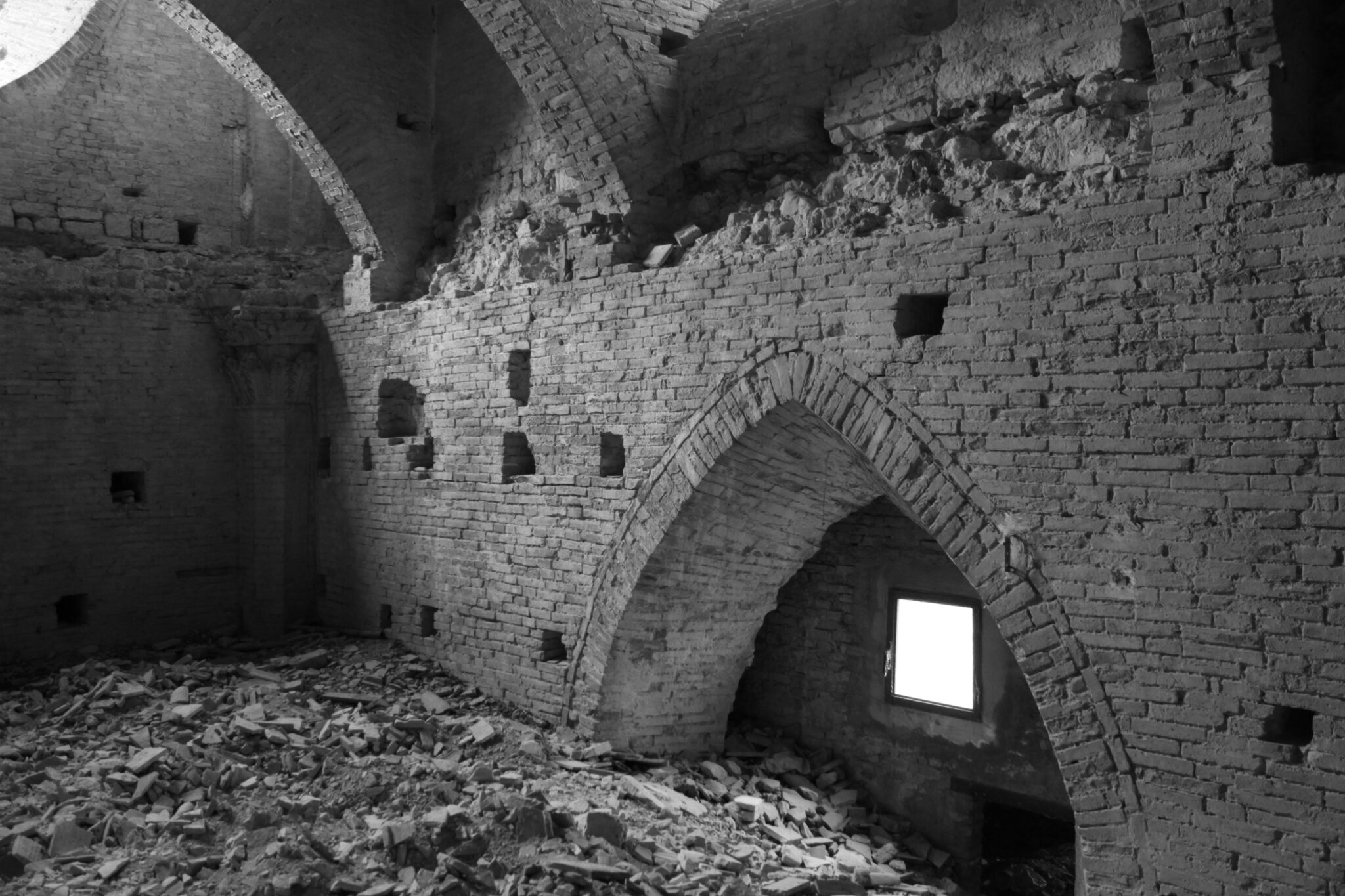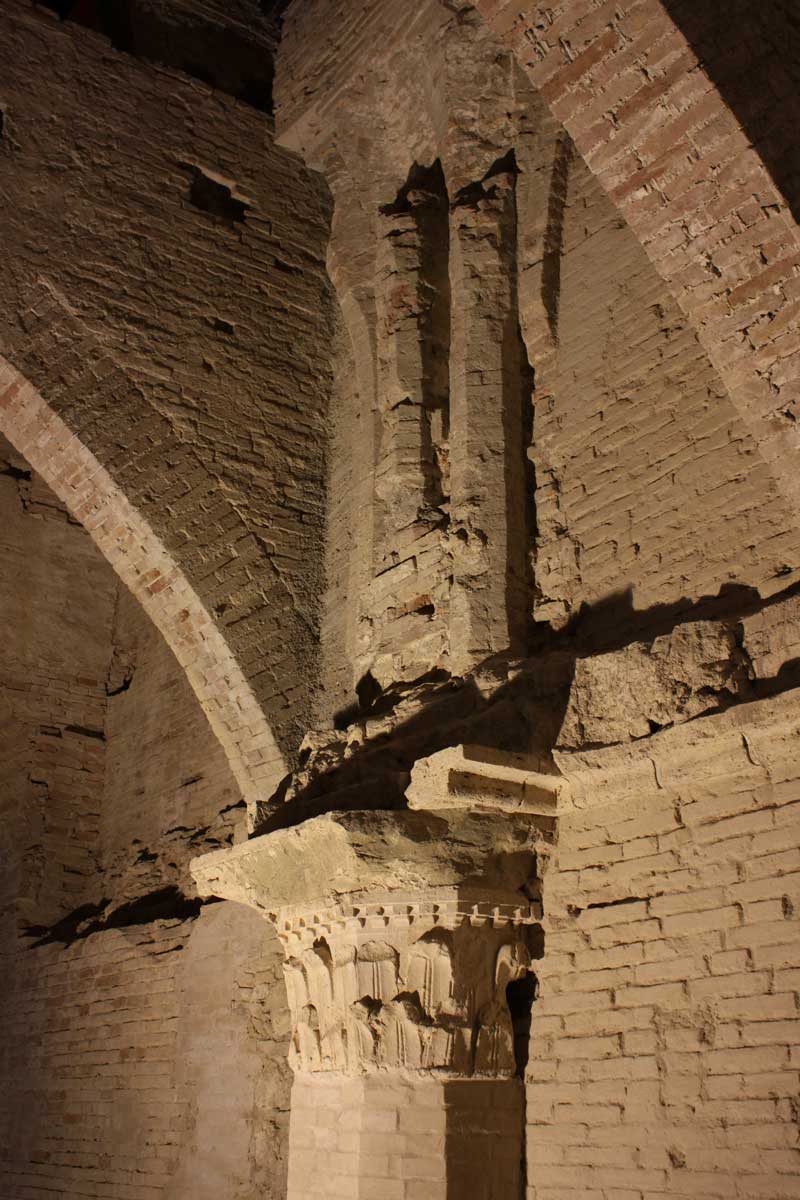Attics always hide big secrets. Sometimes you just need to look up and go up to discover some hidden treasures. The church of San Domenico is well known, but what is hidden in its attic?

A hidden treasure
Few have ventured up there, but today we take you into those rooms, thanks to the engineer Alessandro Polidori who, together with the architect Giulio Ser-Giacomi, is working on the valorisation of this important Perugia landmark. A place that will allow you not only to walk through history, but also to enjoy a breathtaking view.
«The attics of San Domenico are a very particular environment full of elements of the history of architecture and the city, each of which deserves careful observation and reflection. – explains the engineer Polidori – Every single stone has something to tell. Not only is there the beautiful panorama that can be seen from the top of the bell tower, but going up and walking on the extrados of the vaults makes you understand how majestic and grandiose the fourteenth-century church could be.» The vaults that can be admired today were built in the mid-seventeenth century by the architect Carlo Maderno who rebuilt them after the collapse of the primitive Gothic vaults, just as we see them today, with the exception of the side chapels, added in the eighteenth century, and the apse of the church that had not collapsed: the choir and the four side chapels.
«The attic of San Domenico hides the signs of these changes. – continues the engineer – Visiting them you can observe the ancient medieval pillars emerging from the current vaults, the extraordinary features of the capitals and the openings that once guaranteed natural light directly inside the basilica.»
The valorization project
To ensure that all this is visible to the public, there is a project being developed, which involves the creation of three possible visit itineraries. «We start with the tour of the basilica, we then move on to the sacristy, after having admired the reconstructions of the fourteenth-century structure from the watercolors of Ugo Tarchi and, thanks to the wall cavities, we go up towards the attic level. – explains Polidori – Above the vaults the paths unravel between the vaults of the two side naves, the vault of the central nave, that of the choir, of the apse chapels, of the sacristy and then ascend floor after floor up to the fifth level of the bell tower: a real panoramic terrace overlooking the Umbrian valleys at the foot of the hills of Perugia and an unusual and beautiful view of the historic center of Perugia.»
The idea of ​​valorising and visibility of the attics and the bell tower was a union of various proposals and initially saw the friars working together, in particular P. Mario Gallian, from the early nineties, with the architect Giulio Ser-Giacomi and with the San Tommaso D’Aquino Cultural Center; then the architects Ser-Giacomi and Maria Carmela Frate, curators of the restoration work after the 1997 earthquake and the last proposal saw the commitment of the engineer Alessandro Polidori with the help and consultancy of the architect Ser-Giacomi. San Domenico has therefore been the subject of projects for its valorisation for more than twenty years.
«The proposal was put forward to create a museum itinerary in the attics – concludes Polidori – to show the true “heart” of the basilica and allow visitors to reach the highest point of the bell tower to enjoy a 360 degree panorama of Perugia. To do this, further interventions are needed to make these places safe and suitable for opening to the public, so that visits can be carried out in complete safety and accessible to all.”

Invisible place
For now, in fact, visits to the public are only permitted on the occasion of special events, which give everyone the opportunity to admire buildings, towers, attics, places of worship and industrial archeology sites closed to the general public. Among these are the attics of the imposing church of San Domenico, secret spaces born almost by chance from a seventeenth-century renovation that preserve traces of the original Gothic church.
Agnese Priorelli
Latest posts by Agnese Priorelli (see all)
- Trabalza and Jin, when photography perfectly blends different worlds and styles - June 19, 2025
- Cristiano Spilinga, naturalist: «The wolf is back. Bears that have been missing in Umbria since the late 1800s have been spotted» - May 27, 2025
- The Cannara onion: poor in the land, prestigious on the table - April 29, 2025

